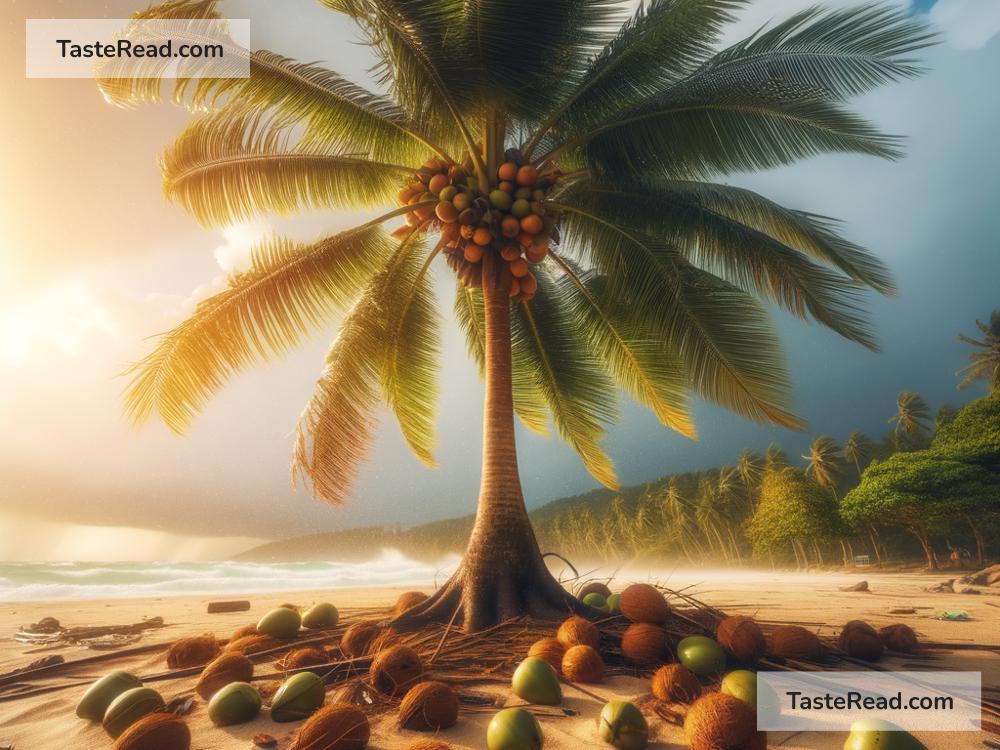How Coconuts Became Symbols of Resilience
Resilience is the ability to overcome challenges, adapt to change, and thrive even in tough conditions. When we think of resilience, nature provides amazing examples, and one of the best symbols of resilience is the humble coconut. This versatile fruit not only survives in difficult environments but also thrives, giving life and nourishment to people around the world. But how did coconuts become symbols of resilience? Let’s dive into their incredible journey.
The Coconut’s Tough Beginnings
Coconuts grow on coconut palm trees, which are mainly found in tropical and coastal regions. These areas often face extreme weather conditions like scorching heat, heavy rain, and strong winds. Despite these challenges, coconut trees thrive where many other plants might fail. They adapt to salty soil, high humidity, and even storms that uproot other trees.
Unlike some plants, coconut trees continuously produce fruit throughout the year, no matter the season. This steady growth and ability to withstand challenges show the enduring strength of this tree, making coconuts perfect symbols of resilience.
A Traveler Across Oceans
One of the most remarkable things about coconuts is their ability to travel far and wide. Scientists believe coconuts originated somewhere in Southeast Asia or the Pacific, but they spread across the globe because of their unique design. Coconuts have tough shells, filled with a layer of fibrous husk that keeps the seed inside safe. They can float on water for months without rotting, allowing them to travel across oceans.
When these floating coconuts land on shores, they grow into new coconut trees, colonizing new areas. Over thousands of years, coconuts migrated to distant islands, continents, and coastlines, becoming a global crop. Their journey shows grit and adaptability—traits we often associate with resilience.
Nourishment for Survival
Coconuts are incredibly useful and provide essential resources to communities that rely on them. Every part of the coconut tree has a purpose. The fruit itself is filled with nutritious water and flesh that people can eat and drink. The oil extracted from coconuts is valuable for cooking, skincare, and even medicine. The tough shell and husk are useful for making ropes, mats, and even building materials.
In many tropical regions, coconut trees are called “the tree of life” because they offer such diverse benefits. For centuries, people have used coconuts to survive through tough times, from food shortages to droughts. In today’s world, coconuts continue to support livelihoods and local economies, showing their resilience as a crop that sustains millions of people.
A Cultural and Spiritual Icon
Coconuts have also taken on cultural and spiritual significance, symbolizing strength, growth, and perseverance in many traditions. In Hindu rituals, coconuts are offered as a sign of devotion and gratitude. In some Pacific Island cultures, coconuts play a central role in myths and legends, often representing life and connection to the earth.
These cultural meanings help coconuts become more than just a fruit. They embody values like resilience, hard work, and the ability to push through challenges. Their tough exterior reminds us to be strong, while their nourishing contents demonstrate the importance of creating life and hope, even in difficult circumstances.
Lessons From the Coconut
Coconuts teach us important lessons about resilience. Their ability to grow in harsh conditions reminds us to stay strong and adapt to our surroundings. When faced with obstacles, coconuts don’t give up—they find ways to continue spreading, growing, and contributing to life wherever they are. This is a powerful lesson for humans.
The coconut tree also shows us that resilience doesn’t mean surviving alone. It provides resources to people, animals, and other plants. Just like the coconut tree, we should try to be helpful and supportive to others as we face challenges together.
Resilience in a Changing World
As the world faces challenges like climate change, food insecurity, and natural disasters, coconuts remain a source of hope. Coconut trees are being studied for their ability to survive in areas affected by rising sea levels and extreme weather. Scientists and farmers are working to grow coconuts in new ways that help communities adapt to these changes.
Coconuts represent the idea that resilience isn’t just about surviving—it’s about thriving and creating solutions. Just as coconut trees have stood tall against storms and nurtured life for centuries, they inspire us to face challenges with courage and creativity.
Conclusion
Coconuts are far more than tropical fruits hanging on palm trees. They are symbols of resilience—strong, adaptable, and life-giving no matter the circumstances. From their ability to survive in harsh environments to their nourishing properties, coconuts teach us valuable lessons about how to overcome challenges and help others along the way.
The next time you sip coconut water or snack on coconut flesh, take a moment to appreciate this remarkable fruit and all it represents. Like the coconut, we can face life’s challenges with toughness and generosity, always finding ways to grow, spread hope, and thrive together.


